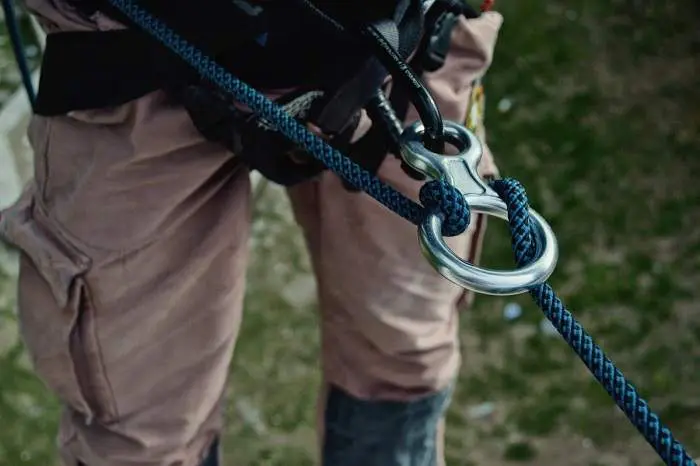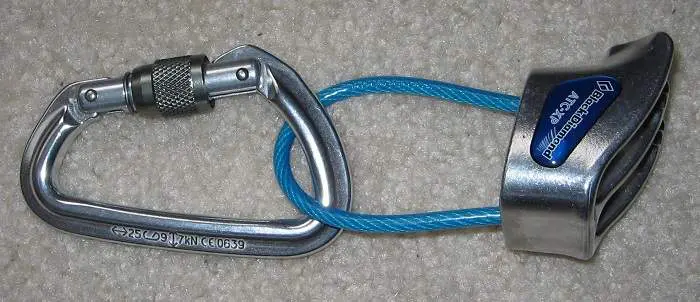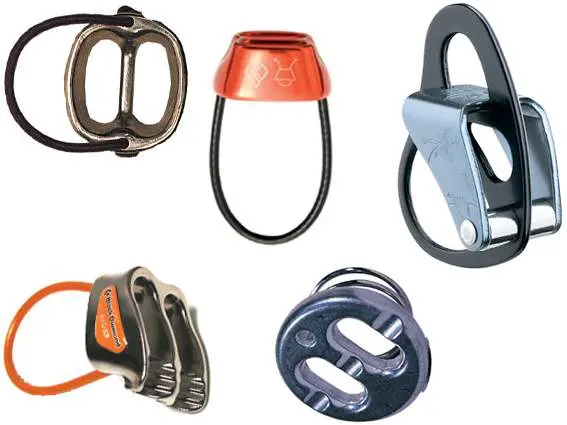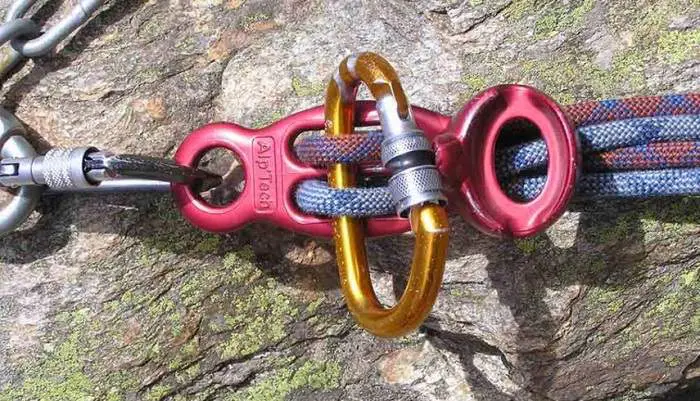Let’s talk a bit about belay devices!
If you’re just starting out on your rappelling journey, or you’re just researching this activity in the hopes of practicing it later, you have a lot of studying to do. The overall list of equipment needed to practice rappelling is not that large, but each and every gear piece is of key importance, particularly safety-related devices such as belay devices and anchors. Today I’m going to talk a bit about belay devices, and I’m going to answer some of the most important questions about this mechanical piece of climbing equipment.
What is the main role of a belay device?
In short: a belay device is used to control the rope during belaying or rappelling, as it was designed to minimize the physical effort associated with these activities. One of the most important roles of a belay device is to stop the rope in the event of a fall.
Some devices are able to do this without any user input, while others require you to pull or hold the rope at a particular angle. When it comes to rappelling, some of these devices were created specifically for controlled descents, but I’m going to cover these in a separate article for the blog’s Gear section.
How are belay devices made?
While the actual manufacturing method depends on each brand and each device type, most belay devices are created from aluminum or some type of alloy. Each device goes through some rigorous testing before hitting the market, which I imagine is mandatory considering the safety-related implications of such a device.
While modern devices often incorporate multiple materials, that’s necessary because they include moving parts, especially those with assisted locking. These are typically mounted on steel axels, such as Petzl’s GriGri, while some use brass slide bearings (Tre’s Sirius). When it comes to tube-type belay devices, they rely on a retaining steel-wire-sling with a polymer coating. The Ergo by Salewa features non-load-bearing polymer parts for enhanced ergonomics. In order of popularity, however, the most popular load-bearing materials remain the aluminum alloys and steel.
Unfortunately, the reality of the matter is that top-tier brands guard their manufacturing secrets carefully. Therefore, experts began to search for manufacturing clues and traces on the surface of various commercially available climbing gear. The results are a bit disappointing if I’m honest, but they did reveal a few important details.
For instance, the Sirius and the Bat Brake by Edelrid are most likely drop forged. However, in the case of the Black Diamond ATC, the device has a complex geometry and no traces of stamping or similar procedures. The ATC does have a series of undercuts, which hint at investment cast as a probable metal-forming technique.
Why is aluminum the main material used for belay devices?
I also want to touch on the subject of constraints. When choosing the material for the belay device, manufacturers need to be sure that it would not include any rope damaging features. Moreover, in order to ensure longevity, the material needs to be highly resistant to corrosion. In order to prevent damage to the rope, the material’s melting point should never be reached. And last but not least, they had to use an affordable and readily available material. All things considered, aluminum quickly becomes the obvious choice.
Why does my belay device have two holes?
When seeing and equipping a belay device for the first time, some rappellers might ask a simple yet relatively confusing question: why does the belay device have two holes? The confusion stems from the fact that many belayers feed their ropes through just a single one of those holes. So what is the purpose of the second one anyway?
- Well, it’s important to remember that certain lead climbs work better and are safer to practice with a pair of lines of anchors. Therefore, the two holes are very useful in a two-rope climb. Keep in mind that such a practice is generally practiced by experienced climbers, as it relies on flawless communication between the climber and the belayer.
- There’s also another thing to consider: some belay devices are asymmetric, and the two holes offer different amounts of friction for the rope. Furthermore, some of them come with special “up” or “down” orientations, and so the two holes provide a clear indication where to feed the rope depending on the belayer being left or right-handed.
- Last but not least, this explanation relates directly to rappelling. The two holes take on the role of an arrestor if the rappeler loops the rope around an anchor and arranges a loop from each length through each eye.
What are the main types of belay devices?
There are many different types of belay devices, but the main categories boil down to just six types. If I somehow manage to skip an important category, feel free to give me a heads up. Generally, different types of belay devices are aimed at different activities. Some devices are better suited for rappelling, others for belaying, and others for gym-climbing.
- The Figure-Eight – One of the most common belay devices for rappelling is the figure-eight, and it’s also one of the simplest belay devices out there. Apart from rappelling, this belay device is also used for caving and rescue missions. The device features two holes, one larger than the other, and the rope mainly goes through the larger hole before being looped around the outside of the small hole. This hole clips into the belay loop located on your harness. Why would you use the figure-eight for rappelling, though? Due to its bulky design, the device dissipates heat rather quickly, which in turn makes your descent a lot smoother. In the event of a larger fall, however, the user needs to pay attention and use most of his or her’s body strength, as the device offers less friction when compared to other similar devices.
- The Munter Hitch – The Munter Hitch is more of an emergency device if nothing else. I wouldn’t really recommend using it unless you have no other choice but it can work just fine in a pinch. Basically, you can use this knot along with a locking carabiner and you can rappel or belay with it. Usually, climbers use the Munter Hitch when they happen to drop their belay device on a multi-pitch climb and can’t afford to stand still. I only used this method once, and it worked well, but it’s nowhere near as safe as a conventional belay device.
- Tubular Belay Devices – Tubular belay devices are the most versatile and the most popular belay devices out there, as they can be used for pretty much any activity involving climbing. I’m talking about sport climbing, gym, single and multi-pitch, and rappelling, of course. These tubular devices have two slots, and the more advanced models come with grooves or teeth that create a bit of extra friction. When rappelling, you have to insert both rope strands through the holes. All climbers appreciate tubular belay devices because they are compact and effective. They also work well with various rope sizes, as well as with double and single ropes.
- Guide Plates – Representing a more advanced version of the conventional tubular device, guide plates include two attachment points, one at each end, and one larger than the other. The biggest plus for a guide plate is that it can be used to belay your second while on a multi-pitch climb. Apart from that, it works just like a regular tuber when used to belay the lead climber. You can also rappel a climber easier with a guide plate thanks to its assisted braking feature.
- Passive-Assisted Braking Devices – These devices are well-suited for rappelling, as they can be used to rappel using two strands of ropes. They have no moving parts, which makes them lightweight and easy to operate. However, they’re not entirely hands-free, as no belaying device really is. These products include a special mechanism that applies pressure on the between the carabiner and the device itself.
- Active assisted braking belay devices are NOT suitable for rappelling, but I’m going to tell you a few things about them anyway, as you might want to use one for belaying during a climbing trip. They are heavier than the passive assisted ones I mentioned above, but they are also the most advanced belay devices available on the market.
This is pretty much all I can tell you about the role of a belay device and how it is manufactured. If you have any more questions or would like to offer some more insight on the matter, feel free to get in touch!



























